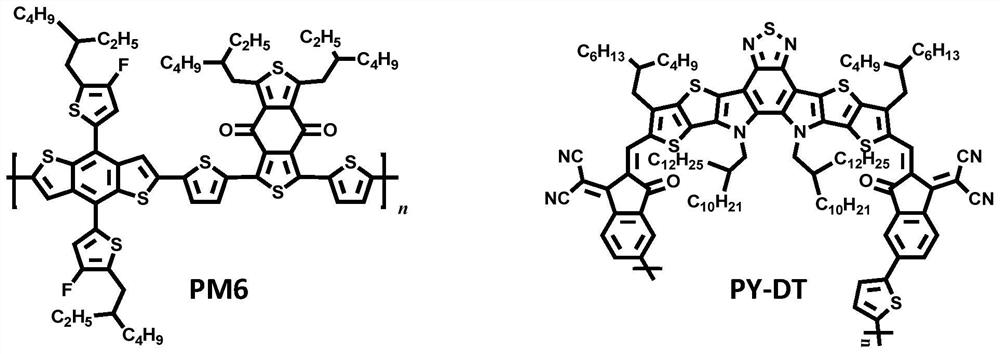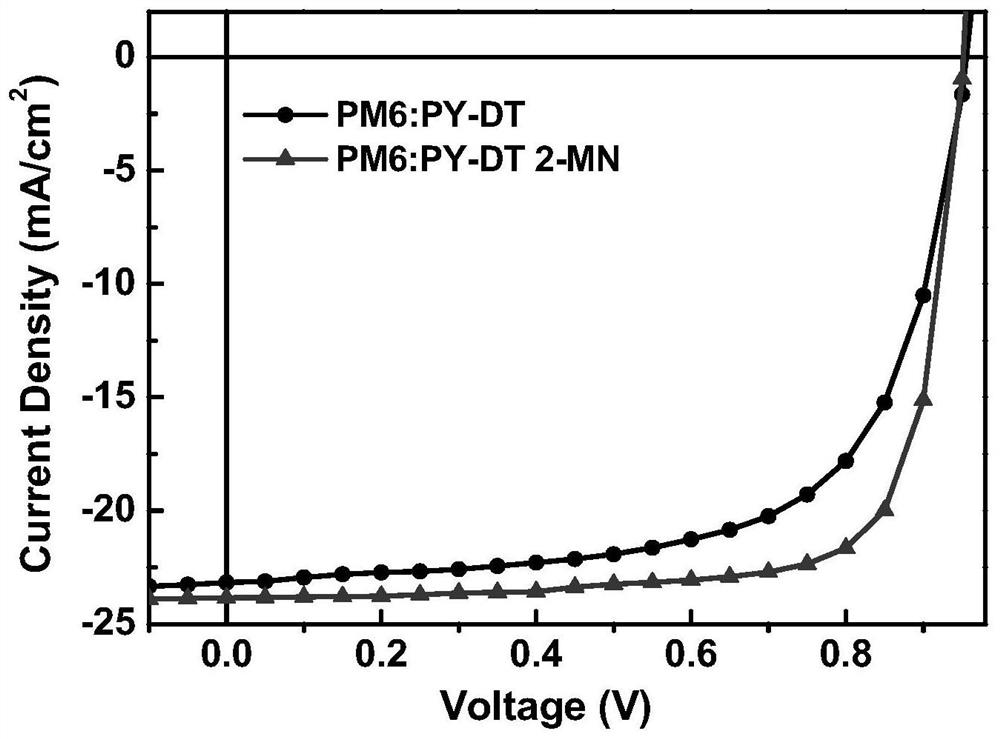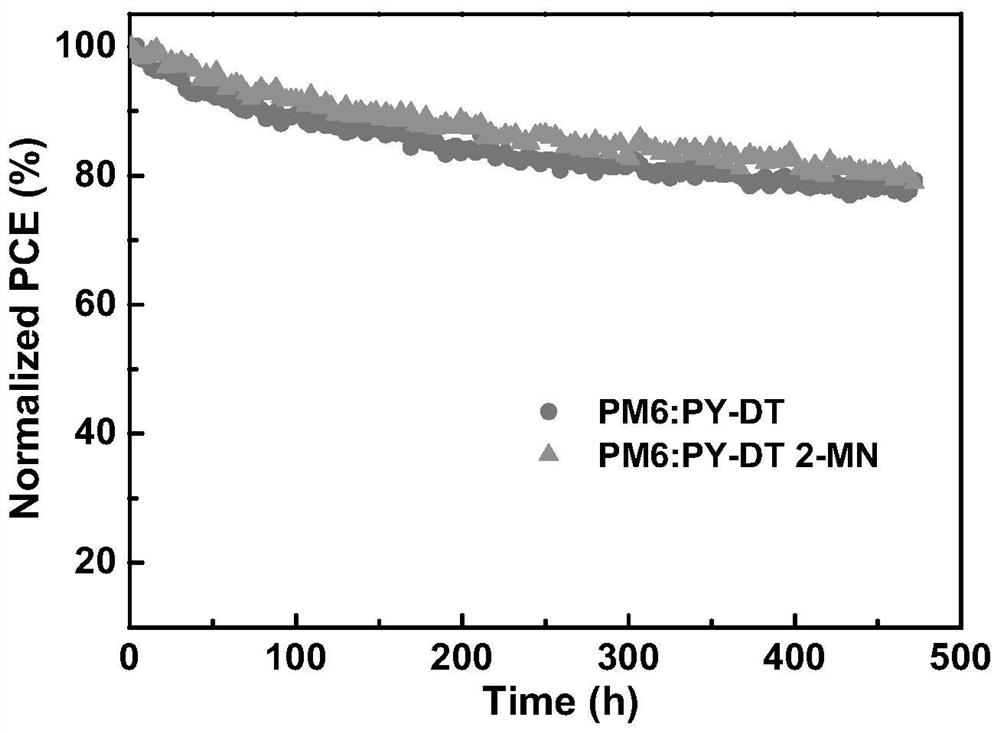Application of 2-methoxynaphthalene as active layer additive and polymer battery of 2-methoxynaphthalene
A technology of methoxynaphthalene and active layer, which is applied in the field of solar cells, can solve the problems of great harm to the human body and the environment, affecting the shape stability of the active layer, and not easy to remove, so as to improve device performance and stability, and good photoelectricity Effects of transformation efficiency and light stability
- Summary
- Abstract
- Description
- Claims
- Application Information
AI Technical Summary
Problems solved by technology
Method used
Image
Examples
Embodiment 1
[0077] 2-MN is used as the additive of the photosensitive active layer, and chloroform is used as the solvent of the active layer to prepare a polymer solar cell device, and the specific method is as follows:
[0078] The prepared device adopts the forward device structure ITO / PEDOT:PSS / active layer / PNDIT-F3N / Ag. From bottom to top are battery positive electrode (indium tin oxide), hole transport layer (PEDOT:PSS), photosensitive active layer, electron transport layer (PNDIT-F3N), and battery negative electrode (metal silver).
[0079] The polymer donor material of the photosensitive active layer is PM6, and the acceptor material is PY-DT. The molecular structures of the two are as follows: figure 1 shown. Weigh PM6, PY-DT and 2-MN according to the mass ratio of 1:1:3, and put them into a bottle for mixing. With the concentration of PM6 as 6.5mg / ml, add the solvent chloroform, stir at room temperature for 4 hours, and complete dissolve. Afterwards, a film was formed by spin...
Embodiment 2
[0082] No additives were added during the preparation of the photosensitive active layer film, and the rest of the preparation process was the same as in Example 1.
[0083] The open circuit voltage of the obtained polymer battery is 0.955V, and the short circuit current density is 23.17mA / cm 2 , the fill factor is 65.4%, and the photoelectric conversion efficiency is 14.47%.
[0084] The performance parameters of the devices obtained in Example 1 and Example 2 are compared and summarized in Table 1. The J-V curves of both are as figure 2 shown. Light stability tracking test of the device (such as image 3 shown) showed that the polymer battery with 2-MN as additive exhibited better light stability.
[0085] From the above comparison, 2-MN can be used as an additive to simultaneously improve the device performance and stability of polymer batteries.
[0086] Table 1 does not use additives, and polymer battery device parameters using additive 2-MN
[0087]
Embodiment 3
[0089] 2-MN is applied to polymer batteries prepared by non-halogen solvents, and o-xylene is used as the preparation solvent. The specific application methods and testing methods are as follows:
[0090] The device structure, photosensitive active layer material and testing method are the same as in Example 1. Active layer preparation conditions: weigh PM6, PY-DT and 2-MN respectively according to the mass ratio of 1:1:3, and put them into a bottle for mixing. With the concentration of PM6 as 9mg / ml, add the solvent o-xylene and heat to 80°C and stirred for 4 hours to complete dissolution. Then, the hot solution at 80° C. was spin-coated into a film by a spin-coater at a spin-coating speed of 1700 rpm to obtain a photosensitive active layer with a film thickness of 100 nm. Finally, it was annealed under a hot stage at 80° C. for 8 minutes to complete the preparation of the photosensitive active layer film.
[0091] The performance parameters of the polymer battery device pr...
PUM
| Property | Measurement | Unit |
|---|---|---|
| current density | aaaaa | aaaaa |
| melting point | aaaaa | aaaaa |
| boiling point | aaaaa | aaaaa |
Abstract
Description
Claims
Application Information
 Login to View More
Login to View More - Generate Ideas
- Intellectual Property
- Life Sciences
- Materials
- Tech Scout
- Unparalleled Data Quality
- Higher Quality Content
- 60% Fewer Hallucinations
Browse by: Latest US Patents, China's latest patents, Technical Efficacy Thesaurus, Application Domain, Technology Topic, Popular Technical Reports.
© 2025 PatSnap. All rights reserved.Legal|Privacy policy|Modern Slavery Act Transparency Statement|Sitemap|About US| Contact US: help@patsnap.com



